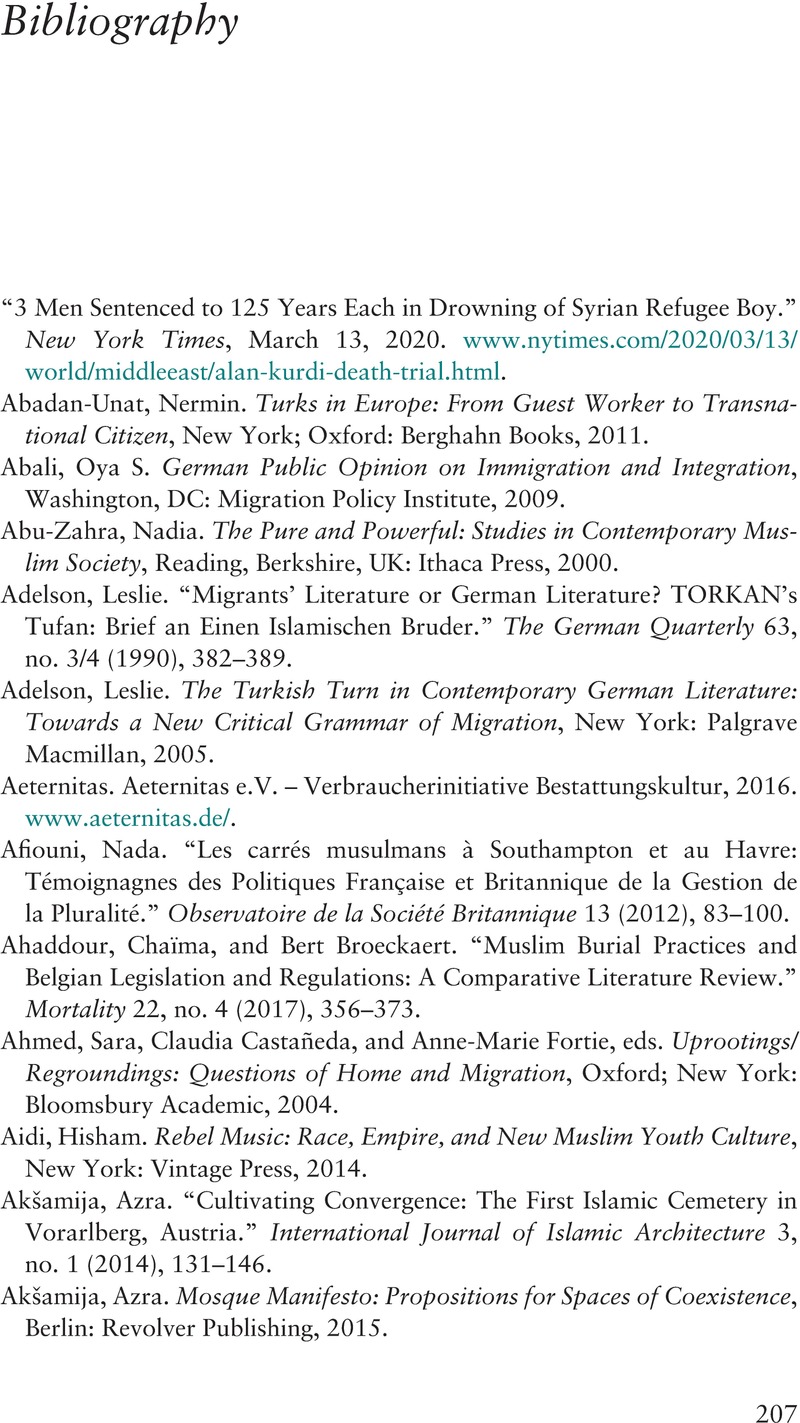Book contents
- Dying Abroad
- LSE International Studies
- Dying Abroad
- Copyright page
- Dedication
- Epigraph
- Contents
- Figures
- Tables
- Acknowledgments
- Abbreviations
- Introduction
- 1 Islamic Funeral Funds and the Moral Economy of Repatriation
- 2 Muslim Undertakers and the Bureaucracy of Death
- 3 Memory and Identity in Diaspora Cemeteries
- 4 Burial and Belonging
- Conclusion
- Bibliography
- Index
- References
Bibliography
Published online by Cambridge University Press: 30 March 2023
- Dying Abroad
- LSE International Studies
- Dying Abroad
- Copyright page
- Dedication
- Epigraph
- Contents
- Figures
- Tables
- Acknowledgments
- Abbreviations
- Introduction
- 1 Islamic Funeral Funds and the Moral Economy of Repatriation
- 2 Muslim Undertakers and the Bureaucracy of Death
- 3 Memory and Identity in Diaspora Cemeteries
- 4 Burial and Belonging
- Conclusion
- Bibliography
- Index
- References
Summary

- Type
- Chapter
- Information
- Dying AbroadThe Political Afterlives of Migration in Europe, pp. 207 - 227Publisher: Cambridge University PressPrint publication year: 2023

